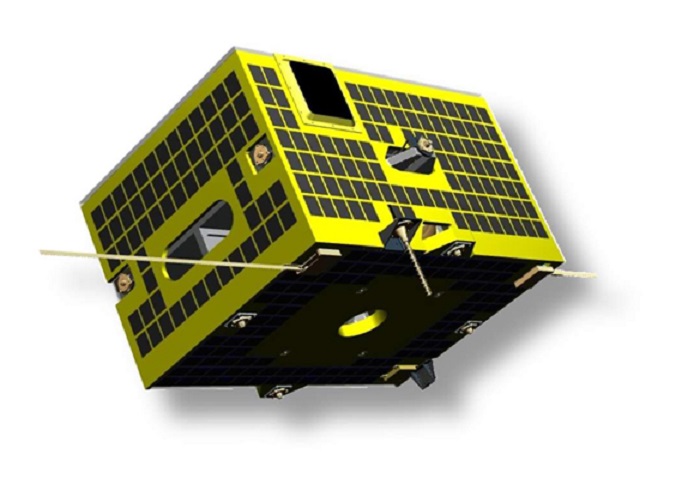



Tianqin-1, China’s first satellite for space-based gravitational wave detection, recently collected global gravity field data, marking the first time China has obtained such data by self-developed satellite, according to Luo Jun, chief scientist of China’s Tianqin program for space gravitational wave detection.
The technologies for global gravity field data acquisition were monopolized by the U.S. and Germany. Tianqin-1 satellite has made China the third country in the world capable of independently detecting global gravity field, said Luo, who is also a deputy to the National People’s Congress (NPC), China’s top legislature, and an academician at the Chinese Academy of Sciences (CAS).
He disclosed the information during the annual “two sessions” in China, namely the fifth session of the 13th NPC and the fifth session of the 13th National Committee of the Chinese People’s Political Consultative Conference (CPPCC), China’s top political advisory body.
Tianqin-1 is not a dedicated satellite for Earth’s gravity field measurement, Luo said, explaining that the satellite was launched to verify key technologies for detecting gravitational wave in space.
Since the tasks of Tianqin program require the integration of technological breakthroughs in multiple fields, the program achieved many sci-tech breakthroughs in frontier fields during the same period, one of which is in measuring Earth’s gravity field, according to Luo.
On August 7, 2020, Tianqin-1 conducted an experiment for application of Earth’s gravity field for about 30 hours, during which its key payloads, the Global Navigation Satellite System (GNSS) receiver and inertial sensor, were both working, and its flight path basically covered all areas of the Earth.
The experiment helped scientists obtain global gravity field model up to degree 15, global grids of gravity anomalies, and global geoid height grids.
Based on the data provided by Tianqin-1, the Tianqin program team in the Sun Yat-Sen University, the initiator of the program, carried out rigorous and substantial data analysis, demonstrations and calculations, and recently wrote a scientific report on global gravity field data and completed the summary and assessment of on-orbit test by Tianqin-1.
“It should be noted that the measurement of Earth’s gravity field by Tianqin-1 didn’t achieve a very high degree of precision,” Luo said. The measurement result is significant as it represents the success in pioneering technologies for the whole process of data handling in using low-orbit satellite to estimate global gravity field, which has laid a solid technological foundation for China’s subsequent project for launching satellite for detailed measurements of Earth’s gravity field.
As essential data of strategic value, Earth’s gravity field data bears great significance for national development and people’s livelihood. The data can serve the needs of many fields, including geodetic surveying, physical geography, oil and gas resource exploration, and national defense, and is helpful for tackling common challenges facing humankind, such as climate change and disaster prevention and mitigation.
Proposed by Luo in 2014, China’s Tianqin program aims for independent detection of space gravitational wave. The idea of placing satellite of the Tianqin program in a geocentric orbit is referred to by global scientists as the Chinese solution to space gravitational wave detection.
The Tianqin-1 project was approved by the China National Space Administration in 2018, and the Tianqin-1 satellite was sent into space from the Taiyuan Satellite Launch Center in north China’s Shanxi province in December 2019.
Tianqin program has yielded multiple sci-tech achievements that are expected to serve national security and economy, according to Luo, who disclosed that the country’s Tianqin-2 project for technological verification tasks is proceeding smoothly.


The Executive and members of the.


The Acting Director, FCT Directorate of.


President Bola Ahmed Tinubu has been.



Barely a month after resignation of.


An Abuja based Legal Practitioner, Osuagwu.



Convener of Equitable Remedy, Mrs. Magaret.


Contractors handling the contract for city.


Nigerian government may have concluded plans.


The Diplomatic Correspondents Association of Nigeria.


A rights group, “Follow Me Talk.
Leave a Comment